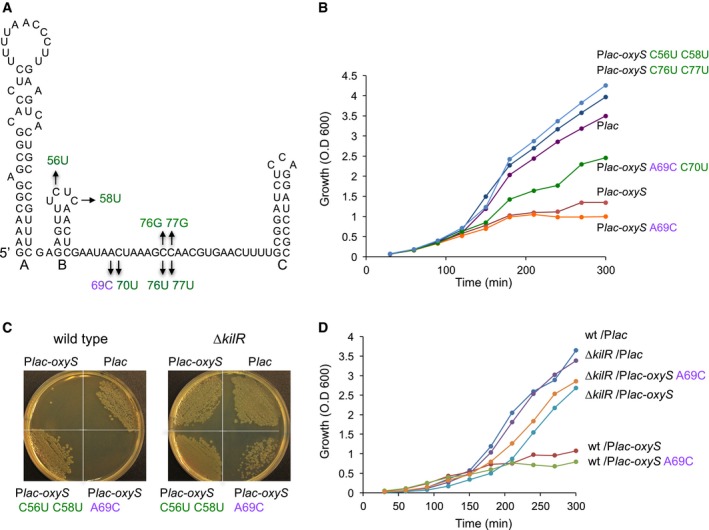Figure 1. Toxic and nontoxic OxyS.

- Toxic (purple) and nontoxic suppressor mutations (green) in OxyS. The loops of hairpins A and C were found previously to interact with the fhlA ribosome‐binding site. Hairpin C is Rho‐independent transcription terminator.
- Growth curves of cells (MG1655 relA::cat, lacI q) with OxyS plasmids. Cultures carrying plasmids were treated with 1 mM IPTG at dilution, OD was measured as indicated.
- OxyS is not toxic in kilR‐deficient cells. Wild‐type and ΔkilR::cat cells were transformed with plasmids expressing OxyS, wild type and mutants, as indicated.
- Growth curves of wild‐type and kilR mutant cells with OxyS plasmids. Cultures of wild‐type and ΔkilR::cat carrying plasmids were treated with 1 mM IPTG at dilution, OD was measured as indicated. Both strains are also relA::kan, lacI q. Although the plating of OxySA69C in ΔkilR seems less efficient than that of OxyS, their growth curves are very similar, indicating that neither OxyS nor OxySA69C are toxic in ΔkilR.
